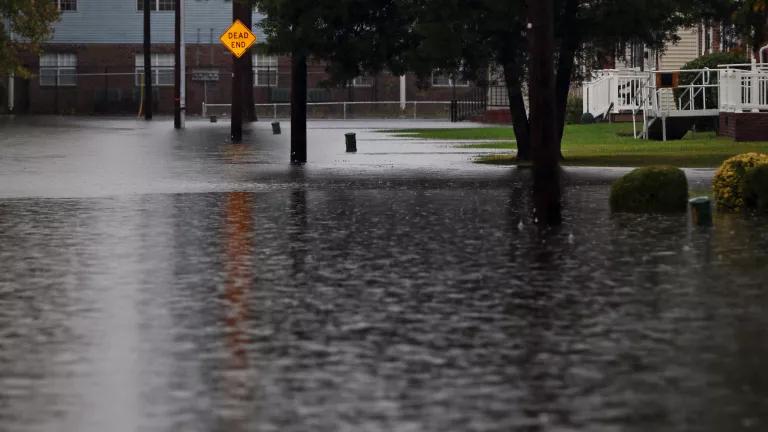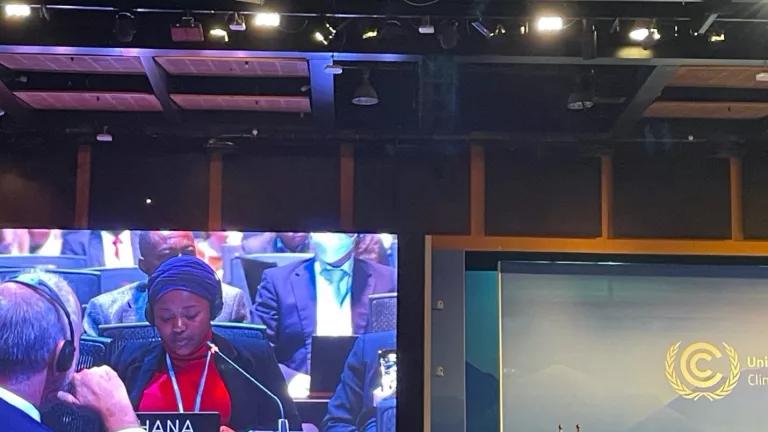Congress Must Embrace President Biden's Call to Drive Equitable Recovery with Climate Action
“We can’t wait any longer to deal with the climate crisis,” said the president. “We need to go further.”

A tributary of the Sacramento River flows into Shasta Lake as the worst drought in decades grips the California region.
Quietly, and largely behind the headlines, congressional leaders are engaged in one of the most fateful negotiations of our time. At stake is whether we seize or squander the historic opportunity to drive equitable recovery with climate action in a moment when the nation urgently needs both.
We may not get this chance again. Congress needs to rise to the challenge and grasp the opportunity to strengthen the economy for the long haul and avert climate catastrophe for all time.
The best way to do both is for Congress to fully fund President Biden’s American Jobs Plan, a key plank in his Build Back Better agenda to confront the climate crisis, make the United States a global clean energy leader, and create millions of good-paying jobs.
And, as record heat, searing drought, raging storms, and rising seas remind us daily, we’re running out of time to get this right.
“We can’t wait any longer to deal with the climate crisis,” Biden said Wednesday at a community college an hour’s drive from Chicago. The infrastructure deal reached among senate Democrats and Republicans last month makes “great strides,” he stressed. “But we need to go further.”
Senate Republicans and Democrats came together two weeks ago around a deal calling for eight years of strategic investment to help, among other things, revitalize our aging bridges, roads, and ports and bring high-speed internet service to rural communities.
The package fell far short, though, of the climate action we need. As the president made clear, we need to go further.
The Build Back Better agenda, for one thing, will clean up the dirty power plants that account for about a third of the nation’s carbon footprint. It creates a clean electricity standard to set us on track to get all of our electricity without burning fossil fuels no later than 2035.
To make sure we get there, Biden has called for commonsense tax credits for consumers and businesses that invest in clean, homegrown power from the wind and sun and a modern, efficient, reliable power grid and storage system. That’s part of a broader plan to boost research and development, improve efficiency, and strengthen the domestic supply chain to help make U.S. workers, manufacturers, and others more competitive in a global clean energy market worth some $30 trillion over the next two decades.
Biden’s Build Back Better agenda will help speed the shift to electric cars, buses, and trucks by, for example, building half a million charging stations nationwide and upgrading the aging federal fleet to mostly electric vehicles.
It will expand sustainable public transit options and reconnect urban neighborhoods cut up decades ago by misguided highway routes. And it will cap the abandoned oil and gas wells, hundreds of thousands nationwide, many of which are spewing into the air dangerous gases like methane—a powerful climate-wrecking greenhouse gas—and threatening groundwater supplies with toxic chemicals.
These are essential steps we must take to confront the rising costs and mounting dangers the climate crisis is inflicting—across the country and around the world.
Just last week, at least 116 people died in Oregon from record heat that scorched the Pacific Northwest, one reason that climate change and fossil fuel pollution will add more than $820 billion to U.S. health costs this year. A tornado packing 140-mile-per-hour winds ripped through Chicago’s western suburbs. Epic flooding left abandoned cars floating along freeways in Detroit.
Crops are withering, orchards are being bulldozed, and cattle herds are being culled amid extreme drought that’s dried out most of the American West. Combined with historic heat, this sets the table for another year of devastating wildfires in the region. And Tropical Storm Elsa battered parts of the Southeast with heavy winds and rain from the fifth named Atlantic storm of this year’s hurricane season.
All of this and more will get worse, the science tells us, unless we cut the carbon pollution from burning gas, coal, and oil in half by 2030, and stop adding it to the atmosphere altogether by 2050.
Biden’s Build Back Better agenda will position the country to do just that. And, with 9.5 million people still out of work, it will create millions of good-paying American jobs, including for workers who choose to belong to a union. At least 40 percent of the benefits will flow to the disadvantaged communities that pay a disproportionate price for the hazard and harm of climate change and fossil fuel pollution.
Biden has put forth a grand strategy for a brighter, more prosperous future for everyone. It’s about strategic investments that will strengthen our economy, make our communities healthier, and our society more equitable. And it’s the strongest action we can take to stand up to the central environmental challenge of our time by confronting the climate crisis head-on, before it’s too late.




